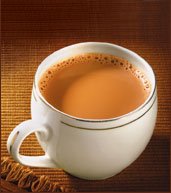India is, as on day, one of the largest tea producing country of the world. Ironically, more than 70 percent of planted Indian leaf is consumed within the country. A large-scale production was started to grow with the efforts of (in the early 1820s) the British East India Company in Assam, India. Virtually, tea industry of India has drastically grown to develop to multiple brands at International level. It is ranked as one among the technologically sound and well-equipped industries among the best in the World.
Darjeeling and Assam are the major areas involved in producing teas at very high level and supplied to different cities of India. The Tea Board of India is the controlling body to grade production, exportation, certification, and other related facets in the trade in India. To coup up the plantation, there are a few areas in India carrying best factors for cultivation.
Darjeeling: It’s one of India’s populated hill stations and is widely capped by plantations that produce elegant light colored, floral smelling tea. This hill station shares about 25% of Indian production in the form of output. Initially graded as the finest tea growing Estate, at 2,750 meters above sea level by the Englishman it retains its popularity even now. Darjeeling is also known to have one of the highest gardens in the world.
Assam: It is a North-East state of India and is the largest tea producing belt in the country. The state is mostly covered the Valley of Brahmaputra. The malty Assamese leaf incorporates bright color. Jorhat positioned itself in the central portion of the valley is recognized as the "Tea Capital".
Munnar : There are wide lush plantation, in this hill station, by miles after miles. About 1600 meters above sea level, the place is flourishing with the plantations and which generate revenue to State and Central Governments through taxes.
Initially, Tata the largest tea manufacturing company in India owned it, but employees themselves now run it. The TATA Tea Museum amazingly portrays the growth of Munnar Estates, Visitors to the museum can see and enjoy on various stages of processing.
Wayanad : It is actually a lush and a mountainous agricultural area belonging to the city of Kerala. This city is involved in the production of some significant amounts in combination with spices and coffee. Majority of tea plantations are located south of Kalpetta. The Estate here is run by a co-operative of Tribals who work and live within on the estate
Nilgiti Mountains: The mountainous Nilgiri district of Tamil Nadu, in south India, is also renowned for its intensely aromatic and distinctive dark leaf. Tea has been grown there for more than a century back and is the most vital industry in this belt . In fact, Conoor is the most suitable place to discover Nilgiri Leaf. Tea is produced throughout the year in Nilgiri. However, people produce good quality of teas starting from the duration of late November to mid of February.
Assam: It is a North-East state of India and is the largest tea producing belt in the country. The state is mostly covered the Valley of Brahmaputra. The malty Assamese leaf incorporates bright color. Jorhat positioned itself in the central portion of the valley is recognized as the "Tea Capital".
Munnar : There are wide lush plantation, in this hill station, by miles after miles. About 1600 meters above sea level, the place is flourishing with the plantations and which generate revenue to State and Central Governments through taxes.
Initially, Tata the largest tea manufacturing company in India owned it, but employees themselves now run it. The TATA Tea Museum amazingly portrays the growth of Munnar Estates, Visitors to the museum can see and enjoy on various stages of processing.
Wayanad : It is actually a lush and a mountainous agricultural area belonging to the city of Kerala. This city is involved in the production of some significant amounts in combination with spices and coffee. Majority of tea plantations are located south of Kalpetta. The Estate here is run by a co-operative of Tribals who work and live within on the estate
Nilgiti Mountains: The mountainous Nilgiri district of Tamil Nadu, in south India, is also renowned for its intensely aromatic and distinctive dark leaf. Tea has been grown there for more than a century back and is the most vital industry in this belt . In fact, Conoor is the most suitable place to discover Nilgiri Leaf. Tea is produced throughout the year in Nilgiri. However, people produce good quality of teas starting from the duration of late November to mid of February.





No comments:
Post a Comment